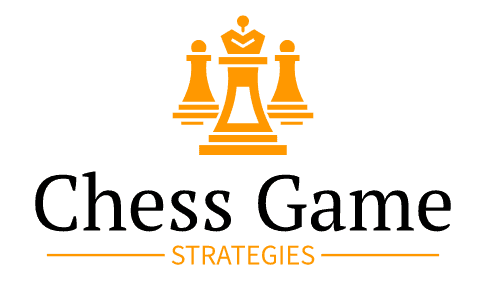
Chess Tactics Guide
Tactics differ from Chess Strategies, although one is often confused with the other. Remember the quote from GM Max Euwe, World Chess Champion, 1935-1937:
“Strategy requires thought; Tactics require observation.”
Think of Chess Strategies as the ‘big-game’ plans, which take into account your Opening sequence, the Middle Game sequence, and the Endgame sequence.
In contrast, Tactics are the ‘smaller-scale’ plans; they’re more short-term thinking when a rapid-response may be required.
Tactics can include:
- Capturing one piece versus another … e.g. in a given situation, would it be more advantageous to capture your enemy’s Bishop or Knight?
- Moving one piece versus another … e.g. you have opportunity to move your Queen into attacking an enemy Rook; however, your enemy is attacking your Pawn that’s two squares away from Promotion … Do you safeguard your Pawn, or continue to threaten with your Queen?
- You’re able to Castle your King to either side of the board … do you Castle Kingside or Queenside?
Those are the sort of tactical themes you’re likely to come up against, during a game of Chess and they contribute to your overall Chess Strategies that’ll, hopefully, see you through from the Opening stage, through to the Endgame stage, where you’ll emerge victorious … Hopefully.
Battery Attack
A Battery is a Chess Tactic that generates a powerful presence along a Rank, a File, or along a Diagonal path.
Along the Straights (Ranks and Files), Batteries can be made up of either Rooks on their own; or, one or more Rooks plus the Queen.
Along the Diagonals, a Battery Attack can be made up of either two Bishops on their own; or, a single Bishop plus the Queen.
Block
A Block is one of your defensive chess tactics, used when you suddenly need to protect another of your pieces that has come under attack.
The Block is used because you either don’t want to move the threatened piece, as it would interfere with your positional strategy; or, because you legally cannot move it.
Clearance Sacrifice
Clearance is a tactical Sacrifice used by a player who sees an improved position, but is currently restricted from moving to that chosen square because it’s currently occupied by another of his pieces.
It means losing a piece – the sacrifice – but the gains in positional play should provide worthy compensation.
Decoy
The Decoy Chess Tactic is to be used when you have a square you want to put a piece on, but you cannot yet do so, as it’s guarded by a piece belonging to the enemy.
The aim, here, is to send one piece, to another square, to try and ‘coax’ that guard to leave its post …
If it does, GAME ON! No hanging about … Get your main piece to its target square and revel in your advantage!
Deflection
Deflection is one of the Chess Tactics used when you want to assault the enemy with one piece – only it would fail immediately, due to a piece of your opponent’s taking up a good defensive position.
Take a closer look at the Decoy tactic (left), as it’s often used to help Deflect the problem enemy piece from its guard-spot.
When you use the Deflection tactic, you aim to pull that piece away from its spot, either to capture it, or just to”dis-position” it – to enable your intended move or capture.
Discovered Attack
A Discovery, or “Discovered Attack“, happens when a piece moves to a square attacking one piece of the enemy itself, while a piece behind is suddenly uncovered, or “Discovered” to automatically threaten another of the enemy’s pieces …
And all this happens with the move of that single, initial piece. The enemy must, then, choose which piece to sacrifice, in order to save the other … All subsequent plans and chess tactics will be affected by the outcome.
However, the luxury to be able to choose the fate of your pieces will be void, should one of the threatened pieces be the King, in which case, it must be safeguarded, at the expense of the other – such as situation is known as a “Discovered Check”.
Discovered Check
A “Discovered Check” works on the exact same principles as the standard Discovered Attack, as mentioned above.
The only exception is that one of the pieces “being” attacked is a player’s King.
Fork Attack
The next of our Chess Tactics is the Fork Attack, which also goes by another name – The Double Attack – and occurs when a single piece attacks two enemy pieces, at two different points at the same time.
The enemy pieces are spread out, loosely like the prongs of a Fork, hence the name “Fork Attack”.
Intermezzo / Zwischenzug
Also known as “Zwischenzug” (in Europe), the Chess Tactic, known more by Americans as “Intermezzo”, literally translates as In-between Move or Intermediate Move …
It involves the deception of moving an unexpected piece, which challenges your opponent into reacting with a move that allows your main attack to be successful.
Pin Attack
A Pin Attack happens when a single piece attacks an enemy piece. What gives the ‘Pin’ its name is that the enemy piece is stuck, protecting a more important piece, directly behind it.
The purpose of a Pin Attack is to keep the LESS-valuable Pawn or Piece on its square, to prevent it from moving while your Pawns &/or Pieces take advantage, either gaining a better position, or capturing enemy material (or BOTH), without the Pinned Pawn or Piece being able to attack your threat(s).
Sacrifices
A Sacrifice is the “deliberate loss of material, for the gain of a certain advantage or objective” …
Advantages can be in terms of Gaining Material; Gaining a better Position; or Gaining Victory.
Alternatively, Sacrifices can be played for the objective of salvaging a Draw – thus, in other words, used to help Avoid Losing.
Skewer Attack
A Skewer Attack is almost like the reversal of the Pin …
Most often the piece that is ‘Skewered’ is the King – it’s in Check and must move …
However, in a line, directly behind the King, is one of its other pieces.
The Skewer Attack is designed to force the front piece to move, so that the piece at the back can be captured, whereas, in a Pin Attack, the front piece often has to remain, ‘Pinned’ where it is.
Traps
Setting a Trap can be a bit of a gamble …
If your opponent spots your sneaky plans, you’ll end up potentially wasting a move.
However, if it works and your opponent falls for your Trap, you’ll be rewarded, with results ranging from a material gain; a positional gain; or it’ll put you on course for a crafty victory!
Windmill Attack
Of all the Chess Tactics we’ve listed, this one’s very rare!
So, don’t be surprised if you’ve never heard of it and never get to see it in an actual game …
Known as a Windmill Attack, it gets its name due to a sequence of consecutive “Checks” & Captures …
Because of the rotational consistency of the attacks, it was remarked to be like the turning blades/sails of a Windmill – and the name has stuck ever since.
During a game, if you can spot the tell-tale features that’ll make a Windmill Attack work, you could wipe out a serious amount of your enemy’s army, in quick succession!
X-Ray Attack
The term X-Ray covers three different forms of Attack – two Outright offensive attacks; while the third incorporates both Defensive and Attacking elements.
Like the X-Ray vision of Superman, the name – X-Ray – is used to imply an ability to “see-through” objects, in order to take a look at – or focus on – what’s behind it.
















